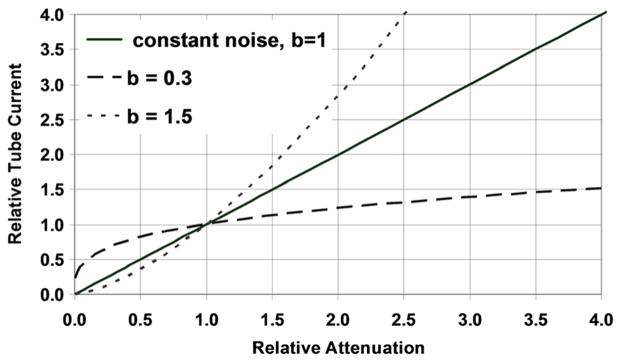FIGURE 3.

Demonstration of the effect of varying b values to adapt the strength of the tube current modulation. Relative attenuation refers to attenuation compared with the attenuation for a reference patient thickness (ie, 36 cm). Relative tube current is compared with the tube current setting for the reference patient thickness. For b = 1, the tube current is linearly increased with patient attenuation, such that image noise is held constant. For b < 1 (0.3), the tube current is neither decreased nor increased as aggressively, resulting in less noise in small patients and more noise in large patients relative to that of the reference patient. For b > 1, the tube current is very aggressively decreased for small patients and increased for large patients relative to the reference patient. This scenario is not likely to be clinically relevant.
